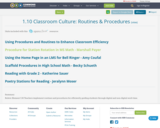
Rubric Element 1.10 Teachers implement routines and procedures for efficiently guiding students through digital and non-digital work time.
- Subject:
- Education
- Material Type:
- Primary Source
- Date Added:
- 07/20/2018

Rubric Element 1.10 Teachers implement routines and procedures for efficiently guiding students through digital and non-digital work time.
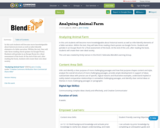
In this unit students will become more knowledgeable about historical events as well as infer/identify elements of a fable narration. Within the text, they will take three reading check quizzes via Google Forms. Students will partake in an Escape Room for a final assessment of the book. At the end of this unit, after reading the book, students will create their own ideal society.
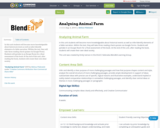
In this unit students will become more knowledgeable about historical events as well as infer/identify elements of a fable narration. Within the text, they will take three reading check quizzes via Google Forms. Students will partake in an Escape Room for a final assessment of the book. At the end of this unit, after reading the book, students will create their own ideal society.
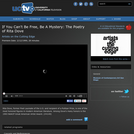
Rita Dove, former Poet Laureate of the U.S. and recipient of a Pulitzer Prize, is one of the most honored figures in modern American literature. Among Dove's many honors is the 1993 NAACP Great American Artist Award. (28 minutes)
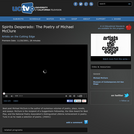
Beat poet Michael McClure is the author of numerous volumes of poetry, plays, novels, and essays. McClure is the recipient of a Guggenheim Fellowship, the Obie Award for Best Play, and the National Poetry Association's Distinguished Lifetime Achievement in poetry. Tune in as he reads a selection of poems. (28 minutes)
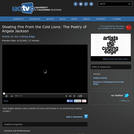
Poet Angela Jackson uses a variety of voices and themes in an entertaining reading. (27 minutes)
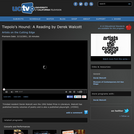
Trinidad resident Derek Walcott won the 1992 Nobel Prize in Literature. Walcott has published twenty volumes of poetry and is also a published playwright. (20 minutes)
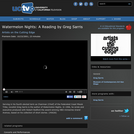
Serving in his fourth elected term as Chairman (Chief) of the Federated Coast Miwok Tribe, novelist Greg Sarris is the author of Watermelon Nights. In 1996, he wrote and executive produced with Robert Redford the award-winning HBO miniseries Grand Avenue, based on his collection of short stories. (23 minutes)

This is a lesson which gives students the opportunity to imagine they are scientists, provides them with a basic understanding of aurora and helps them to use creative methods in their observations. First, students will study the scientific aspect of the aurora. They will also look at images of the aurora (both pictures and illustrations) and describe what they think of when they see them. These descriptions can be stored in the student portfolios as they will be useful in future lessons. Includes teacher notes and instructions, student workshops and an online, animated story, and related teacher resources on aurora. This is lesson three of a collection of five activities that can be used individually or as a sequence; concludes with a KWL (Know/Want-to-know/Learned) assessment activity.

In this lesson, students will demonstrate their understanding of the aurora by writing their own poems. Teachers can decide which form(s) of poetry to use from their worksheets or allow students to create their own. Examples of styles include: Acrostic, List, Haiku, Like and As, and May and Could. To help students get inspired, the class will read a poem on the aurora, and they can also look through their portfolios to help form ideas. Includes teacher notes and instructions, student workshops and an online, animated story, and related teacher resources on aurora. This is lesson five of a collection of five activities that can be used individually or as a sequence; concludes with a KWL (Know/Want-to-know/Learned) assessment activity.

Students will examine how patriotism comes in many forms through an analysis of the short film "Patriotism and Protest." In the film, experts and Minidoka survivors highlight how the infamous "loyalty questionnaire" during WWII divided the Japanese American community.
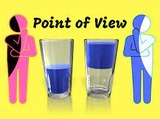
Circle of Viewpoints helps students identify the different perspectives that could be present in or affected by what has just been read, seen, or heard. This routine relies on the ability of students to identify different perspectives that are presented around a topic. It will create greater awareness of how others may be thinking and feeling, thus reinforcing that people think differently about the same things. This activity will be a prewriting activity to set them up to write a narrative essay using the novel Stargirl by Jerry Spinelli.

In this activity, students will create their own travel brochure or poster inviting people to visit a place where they could see an aurora. It is recommended that the class complete Lesson 1 in this series - What I know about the Aurora - prior to this activity. Includes teacher notes and instructions, student workshops and an online, animated story, and related teacher resources on aurora. This is lesson four of a collection of five activities that can be used individually or as a sequence; concludes with a KWL (Know/Want-to-know/Learned) assessment activity.
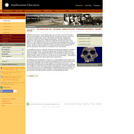
This site introduces students to archeology -- the study of material remains to learn about past human experiences. This lesson (Grades 3-8) discusses various challenges of an archaeologist: locating a site that will yield clues about the people who once lived there, conducting excavations, and more. Students identify artifacts from a contemporary setting, describe the function of each artifact, identify methods for dating soil layers, and interpret soil profiles.
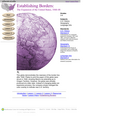
This site offers geography and history activities showing how two years in history had an indelible impact on American politics and culture. Students interpret historical maps, identify territories acquired by the U.S., identify states later formed from these territories, examine the territorial status of Texas, and identify political, social, and economic issues related to the expansion of the U.S. in the 1840s.
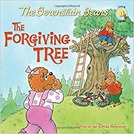
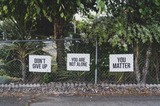
In these lessons, you will see different scenarios regarding substance use, misuse, and abuse and have the opportunity to practice peer resistance skills using effective communication skills.
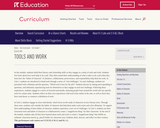
Grade 1: Module 1 of the EL Education K-8 Language Arts Curriculum. In this module, students build their literacy and social-emotional skills through the analysis of literary and informational texts, as they engage in a study of tools and work. For more information on getting started with the curriculum, please visit https://curriculum.eleducation.org.
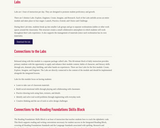
Labs component for Grade K: Module 1 of the EL Education K-8 Language Arts Curriculum. Labs provide students with an hour of engaging, hands-on play to build habits of character, literacy skills, and module-related content understanding. Labs are directly connected to the content of this language arts module, Tools and Work, and should be implemented alongside the module lessons. For more information on Labs, please visit https://curriculum.eleducation.org/about-k-2-labs-and-ALL-block.
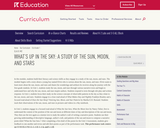
Grade 1: Module 2 of the EL Education K-8 Language Arts Curriculum. In this module, students build their literacy and social-emotional skills through the analysis of literary and informational texts, as they engage in a study of the sun, moon, and stars. For more information on getting started with the curriculum, please visit https://curriculum.eleducation.org.